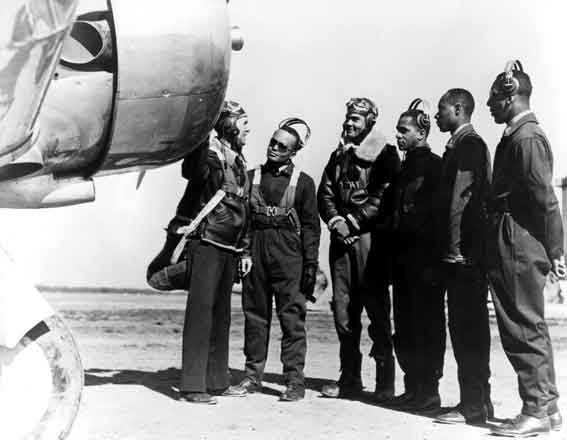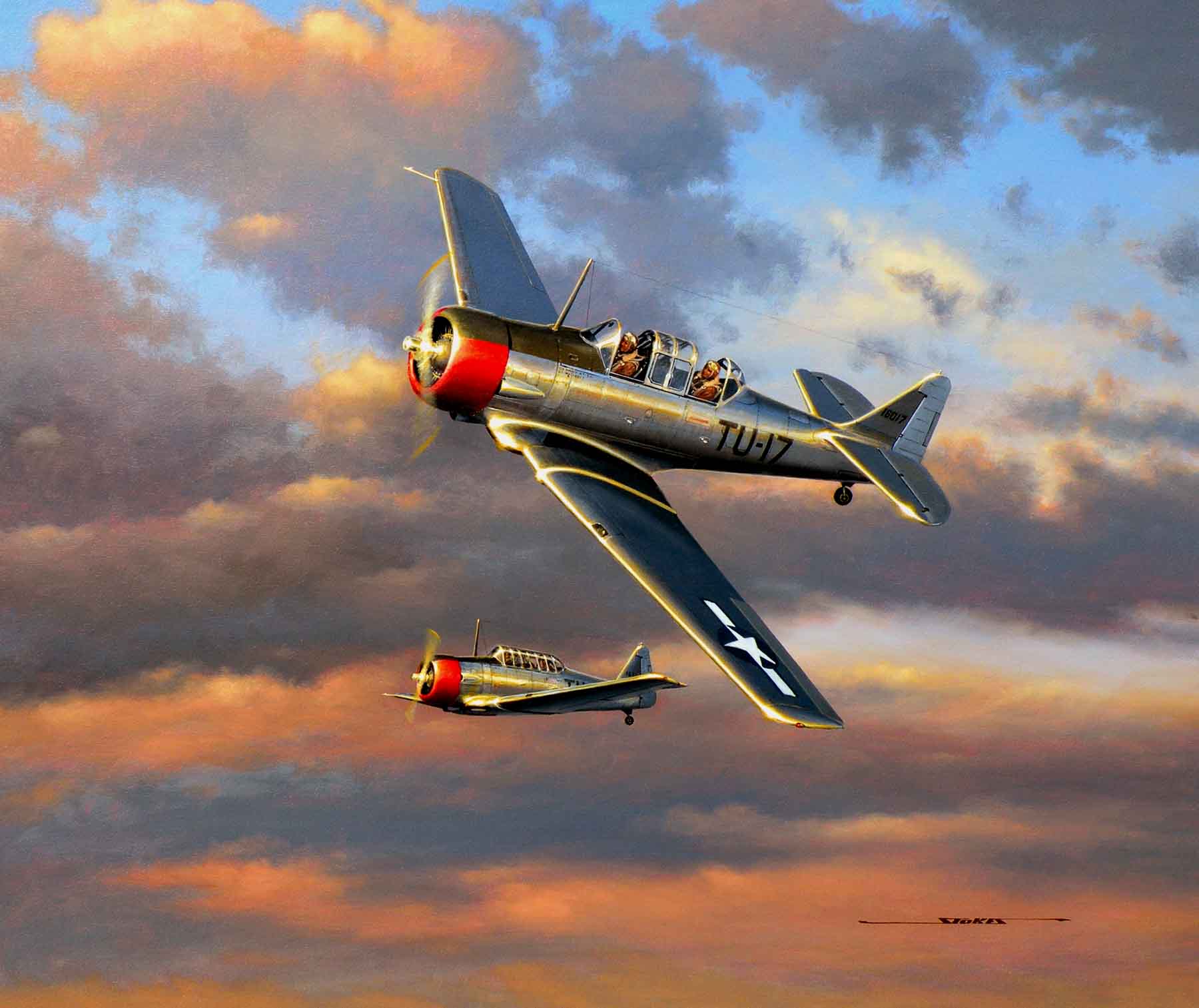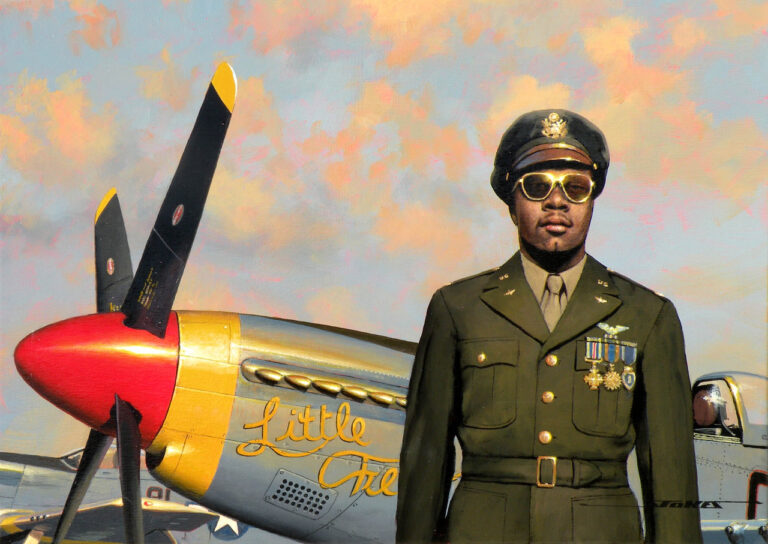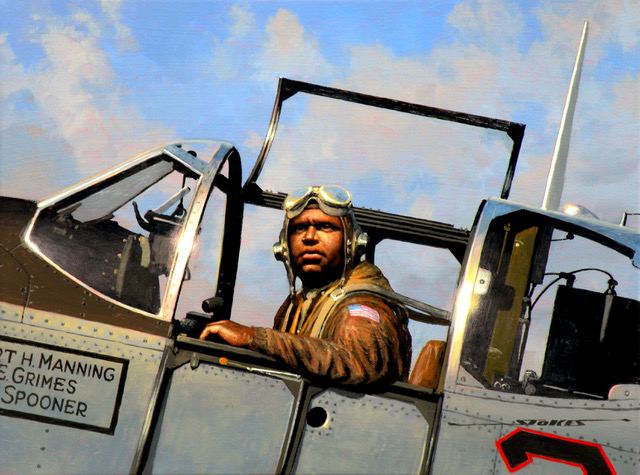In the flight training process, new cadets learned how to fly a small airplane, like a Piper Cub. After the Cub, they had dual instruction in an aircraft like the Boeing Stearman PT-17. At that point, they were transferred to Tuskegee Army Air Field for basic training in the Vultee BT-13.
The final step for the cadets at Tuskegee Army Air Field was flying in the front seat of an AT-6 Texan advanced trainer. The instructor sat in the back seat. The AT-6 was the most complex aircraft that the cadet had flown while in training. It was big, powerful and rugged. The AT-6 had retractable landing gear and a constant speed prop. They both added to the complexity of flying the aircraft for the new pilot.
Once the instructor signed off the cadet to fly the AT-6 solo, the cadet went out flying by himself to practice his piloting skills. He did landings, take-offs, aerobatic maneuvers, and generally became more comfortable flying in the big advanced trainer.
Then came the cross-country flights. The instructor and the cadet flew cross-country, airport to airport. If the instructor was satisfied with the cadet’s ability, he then signed off the cadet’s log book and the new pilot started making solo cross-country flights. During this final phase of instruction, the young pilot became a master of his aircraft and, at least in his own mind, transitioned from being a student to becoming a pilot.
The last thing that the instructor did was get the new pilot prepared to fly a fighter. The instructor taught the cadet everything that he needed to know about flying a high-spirited, powerful fighter. The new fighter pilot would then climb into the fighter pilot’s seat and the instructor would turn him loose. The fighters were all single seat, so the first time a brand new pilot flew a fighter, it was solo.





